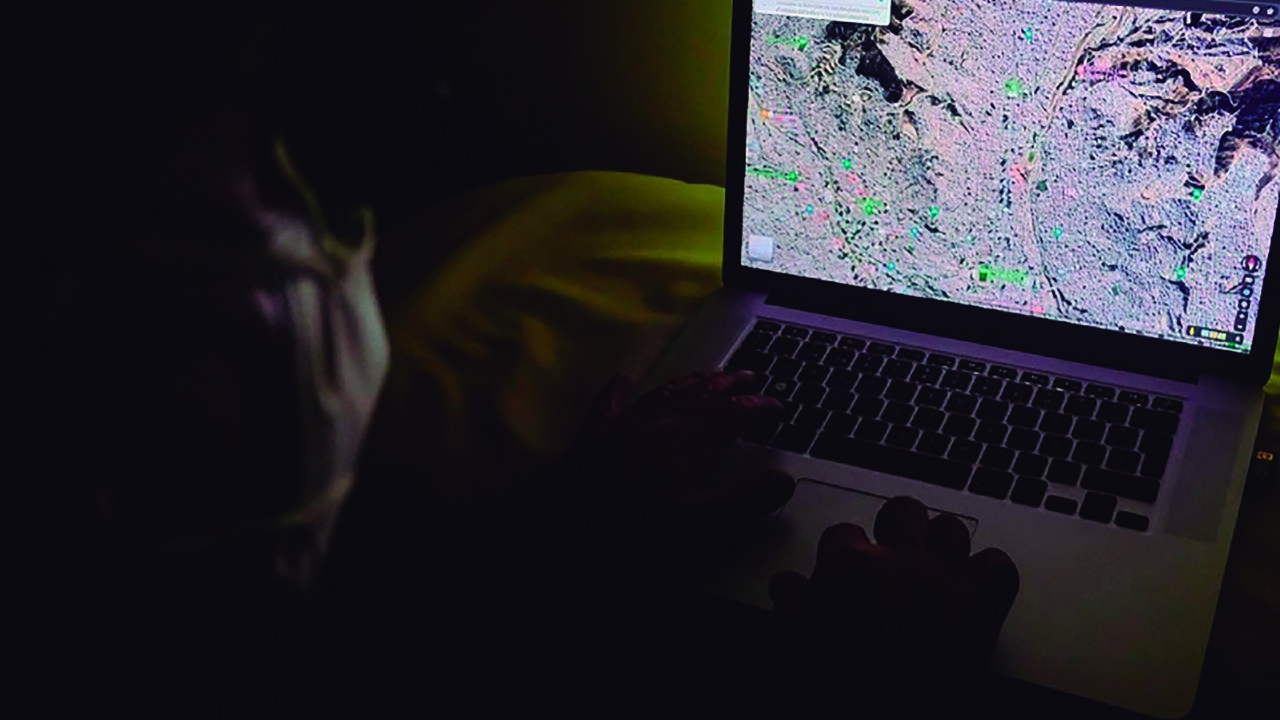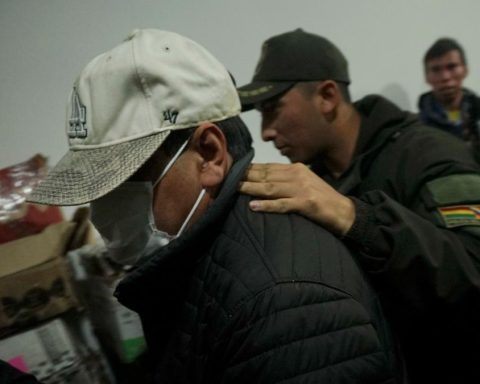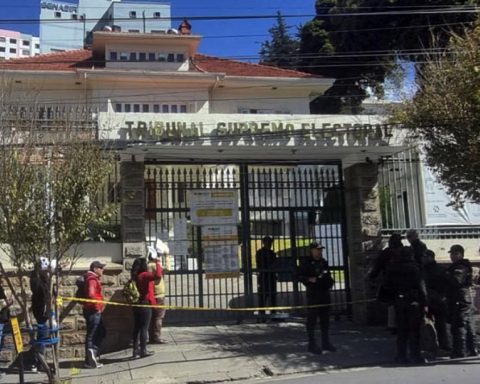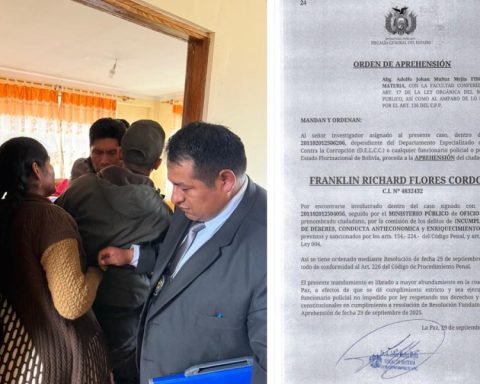Malkya Tudela / Santa Cruz
Luciana has 29 screenshots with messages from a person who insults her and exposes her in Facebook and WhatsApp groups. She is stressed and scared. Her stalker uses the suggestive photos that she has shared to attack and harass her without her being able to avoid it.
“With all that (shows screenshots) you will realize what I’m going through. The Police do nothing, just send me to court, because they are not in charge of this part of defamation, they told me yesterday, “he says. Screenshots reveal the violence that haunts her.
Digital sexual violence, including acts such as sexting and grooming, are perpetrated against girls, adolescents and women in a context in which the Police do not have the technical skills to prosecute it and there are no laws to punish it.
“Sexting” or “sexting” consists of voluntarily sending images of erotic content in a context of trust, generally to a partner and through digital means. The problem arises when these images are shared outside of that context, without the person’s consent and sometimes for the purpose of extortion or revenge.
That happened to Luciana. She shared pictures of herself in a private Telegram group. Last October, an anonymous person began to spread these images in other groups and social networks with an added text that falsely indicated her as HIV positive. With the passage of time the insults and harassment amplified.
“Last night, when I was about to rest, I entered the group and the guy posted a message saying he was coming here. He put the image of a devil and said that he is coming to settle accounts”, explains Luciana. She doesn’t know who or why is harassing her.
It’s a crime?
Photo: Malkya Tudela/ Page Seven
In the cybercrime unit of the Special Force to Fight Crime (Felcc) of Santa Cruz, Sergeant Edwin Pimienta begins his day in front of two screens: on one he has the institution’s Facebook open and on the other he has written “ what is sexting? in the Google search engine.
“Most of those affected do not come to report because they feel their privacy has been violated. Yes, there are cases that have been received and investigated. In the case of the extortionists, it has been possible to catch one or the other”, explains Pimienta.
Luciana went to denounce her case accompanied by a human rights defender and a lawyer at the Felcc of the Alalay lagoon. She went to the cybercrime unit, where she was referred to human trafficking and smuggling, but she was not treated there either and was sent to court.
Pimienta explains that criminal legislation only admits the crime of “computer manipulation”, which refers to artifices to access personal data from bank accounts and similar sites with economic damage to the affected person.
“Sexting does not fit into a crime of the Criminal Code, we cannot consider it as ‘computer manipulation’ because the law is not so broad to include the theft of images. It would have to be adapted to the crimes of trafficking and traffic for pornography”, says the sergeant.
The uniformed officers also have no conditions to investigate these issues. Pimienta explains: “Unfortunately, the office only has access to the Internet, we do not have support from telephone lines, something necessary to investigate telephone numbers.”
The occurrence or frequency of these crimes is unknown. In addition to the fact that few people file complaints so as not to be exposed to relatives and officials, the confidentiality of information is added. Sergeant Pimienta was instructed not to share statistics or refer to specific cases in Santa Cruz.
In regulatory limbo
“If it’s sexting, if it’s phishing, if it’s grooming, cyberbullying, stalking, everything that is recent computer crimes, they are classifying them as pornography, because we don’t have updated legislation,” says lawyer Beatriz Medina, who works on the modification of the Human Trafficking and Trafficking Law.
These figures allude to identity theft (phishing), harassment by an adult of a child (grooming), bullying by digital means or following someone (stalking) with the intention of causing harm. All are actions that can seriously harm people.
For Medina, the problem is complex and in the aspect of prevention it has to do with the very characteristics of society and the responsibility of parents towards their children, more so now that digital tools are in daily use. In his research experience, he found, in a classroom, that 38 students out of a total of 40, around 15 years old, had videos with sexual content on their cell phones.
But the fact is that the norm has been overwhelmed by a reality that advances in strides and shocks. More crimes are rejected than are processed and, according to Medina, in almost ten years that Law 263 on Trafficking and Trafficking has been in force, not a single case of protection for victims or witnesses has been registered; nor are cases of labor reinsertion of victims. There are no shelters for people over 18 years of age and before the pandemic there were already prohibitions for prevention and socialization tasks in educational units.
And the latter is more necessary than ever because since 2020, children and adolescents are mostly exposed to virtual classes and the use of digital media. A Plan International survey called Connected and Safe, carried out in October 2021, revealed that seven out of 10 girls suffered online harassment and one in three felt a loss of self-esteem and self-confidence after that experience of harassment.
The survey was conducted in the highlands of La Paz, Santa Cruz, Chuquisaca and Tarija, and the nature of the harassment suffered is not explained. In the consultation, applied to more than 1,050 girls, they affirmed that five out of 10 never reported having suffered digital violence and that in general they turn to their own friends or friends when this happens to them.
Against vulnerable groups
The cases do not seem to be just with the intent to blackmail someone. Galleta (his pseudonym) is 35 years old, is HIV-positive and knows of several cases in which stalkers who have the serious intention of hurting or harming someone without the need to seek money. Their experience is that of having suffered cyberbullying or cyberbullying when they exposed their identity and status as a person with HIV on social networks. But he’s not the only one.
“In the community, HIV-positive people have been badly affected by the misuse of social media. They are being exposed publicly with a photo on Twitter, ”he says on WhatsApp with a young voice.
“We have gone to acquaintances who work in the legal area -he continues-, but the advice they have given us has been useless because nothing can be done so that these platforms act on people who are committing crimes behind their anonymity”.
The facts that Galleta denounces show that behind each case of harassment there is an intention to harm, follow-up, investment of time, handling of information of the victimized person and use of social networks to publish that harassment.
“They use community networks, Tinder or Grindr, among others. They capture images of private groups, in such a way that they have enough material to expose people, the situation is serious. We live in ignorance of what we can do, but the little we can do is useless”, says Galleta.
He adds that personal data, photographs of faces, medical diagnoses, sexual options and everything that stalkers can find are disclosed on the networks.
Luciana was told that exposing her face in the photographs could have been a mistake, other sex workers avoid doing so, just as they avoid exposing any easily identifiable physical trait (tattoos, places and license plates) in their private groups.
She is trying to avoid her work as a sex worker for a while and now, to her permanent concern, has been added the fact that she has revealed the capture of the serial femicide Richard Choque Flores, who captured his victims in La Paz through Facebook pages. .
7
OUT OF EVERY 10 GIRLS
Bolivian women suffered digital violence
and five did not report it,
according to a Plan International survey.
Most of those affected do not come to report (…) It has been possible to catch one or another extortionist
Sgt. Edwin Pimienta, Felcc
All new computer crimes classify them as pornography, we do not have updated legislation
Beatriz Medina, lawyer
Platforms do not act on people who commit crimes behind their anonymity
Cookie, pseudonym
Sextortion is raging against vulnerable groups
“Since the pandemic, complaints of digital sexual violence have begun to arrive at our institution, complaints from the LGBT community, sex workers and people living with HIV. There were since the beginning of social networks, but now there are more”, explains Harold Mendoza, a researcher at the Institute for Human Development and the Community Observatory of Human Rights in Cochabamba.
In October, the IDH carried out an online survey that was answered by 108 people from the LGBT community in the country. Most in the range of 18 to 29 years.
25% were threatened with “sextortion”, another 25% do not know if their photos with sexual content were published and 13% say that extortion was carried out against them.
Mendoza explains that most of the events occurred on Facebook and WhatsApp, followed by dating platforms such as Tinder and Grindr.
“Of the group of people who have suffered extortion, 57% reported it, 14% went to friends and 14% did nothing. This data worries us. This is because by belonging to the LGTB collective, discrimination and stigma come into play. The common thought is: why should I file a complaint if the media is going to appear, everyone is going to find out, the police are going to mistreat me, it is going to be written that I am gay or lesbian or bisexual or a trans woman. Because of that fear of exposing himself more, he does not report it,” he explains.
The victims in general were publicly singled out for their sexual identity or slandered for being HIV-positive or for being a sex worker. 52% also say that they used their photos, even of their faces, to open fake profiles on networks.
Mendoza explains that there are cases, reported by other countries, in which young people and adults have committed suicide due to extortion in networks.

Photo: Page Seven / File


















